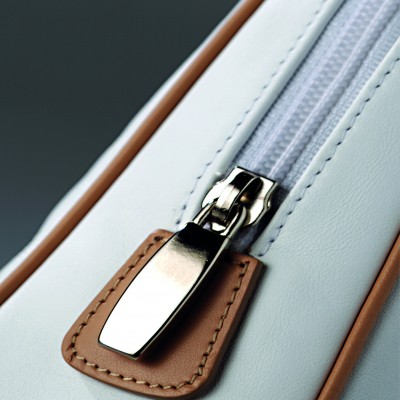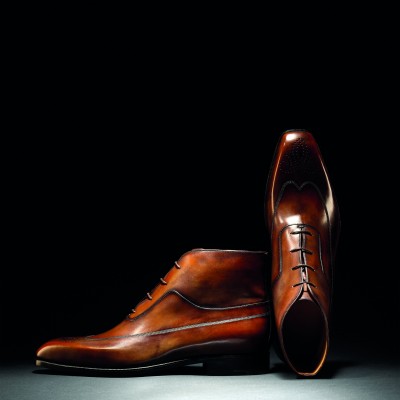Une balance commerciale qui se rapproche de l’équilibre (-13%)
Alors que la France connaît son pire déficit commercial depuis 2011, la Filière Française du Cuir a réduit le sien de 13%. Bien qu’encore déficitaire, la balance commerciale passe à 955 millions d’euros en 2017 contre 1,1 milliard d’euros en 2016 et 1,4 en milliard d’euros en 2015. Le taux de couverture s’élève à 92%, gagnant 6 points depuis 2014.
Même constat au niveau des importations que des exportations. La Filière Française du Cuir connaît de meilleurs résultats que l’ensemble des autres secteurs. Toutes filières confondues, les douanes françaises ont enregistré une hausse de 7% à l’import et 4,5% à l’export. Les importations de la Filière Française du Cuir évaluées à 11,6 milliards d’euros, n’augmentent que de 5%, tandis que les exportations, pesant 10,6 milliards d’euros, progressent de 7%.
Les ventes vers les principaux clients, à savoir l’Italie, Hong-Kong, les Etats-Unis et le Royaume-Uni ont respectivement progressé de 7%, 13%, 1% et 18%. Les secteurs de la chaussure et de la maroquinerie, qui représentent respectivement 30% et 61% des exportations françaises de la Filière Française du Cuir réalisent les meilleures performances à l’export. Leurs ventes à l’étranger enregistrent des hausses de 7% et 9%.

La maroquinerie, une des industries françaises les plus exportatrices (+9%)
En exportant pour un montant de 6,5 milliards d’euros, en hausse de 9% par rapport à 2016, l’industrie de la maroquinerie est en bonne place dans le palmarès des industries les plus exportatrices de France.
Les échanges de ce secteur sont largement excédentaires (taux de couverture de 174%, en hausse de 3 points par rapport à 2016). En valeur, la France exporte beaucoup plus qu’elle n’importe. Ses principaux clients sont Hong-Kong, les Etats-Unis et Singapour. Dans ces trois pays, les ventes ont respectivement progressé de 15%, 1% et 12%. Les ventes d’articles de maroquinerie, qui représentent 44% des exportations françaises, augmentent de 9%. La demande européenne évolue de manière encore plus rapide. En effet, les exportations au sein de l’Union Européenne (35% des exportations) progressent de 13%. Les ventes en Italie, au Royaume-Uni et en Allemagne ont bénéficié d’un essor respectif de 9%, 19% et 11%.
La demande étrangère pour les produits de luxe français est toujours forte. Les ventes d’articles de voyage et de sacs à main augmentent respectivement de 24% et 10%. Le prix moyen en douanes des sacs à main exportés a connu une hausse de 16% : 477 euros pour les sacs en cuir et 85 euros pour les sacs en autres matières.
Le recul de l’Asie et la progression de l’Europe dans la part des importations françaises témoignent d’une montée en gamme des articles importés
La part de l’Europe dans les importations françaises a tendance à croitre alors que la part de l’Asie se réduit. Les importations en provenance d’Europe et d’Asie représentent respectivement 49% et 46% (contre 45% et 50% en 2015, 47% et 48% en 2016).
Ce recul de l’Asie s’explique en grande partie par la réduction des importations venant de Chine. Elles ont régressé de 7% en 2016 et 3% en 2017. La Chine qui était le plus gros fournisseur de la France vient d’être devancée par l’Italie dont les ventes sur l’hexagone ont progressé de 15%.
Les importations d’articles en provenance d’Europe (5,7 milliards d’euros) augmentent de 11% alors que celles d’Asie (5,4 milliards d’euros) augmentent de 1%. Ce sont les importations provenant du Vietnam (3ème fournisseur de la France), de l’Inde (5ème) et de l’Indonésie (7ème) qui compensent l’affaiblissement des livraisons chinoises. Elles ont respectivement évolué de 9%, 2% et 3%. Le prix moyen d’une chaussure (hors pantoufle) importée de ces pays est respectivement de 18 euros, 17 euros et 23 euros, alors qu’il est de 7 euros pour une chaussure chinoise.
La France a importé 79,4 millions de sacs à main, soit 6,8 millions de moins qu’en 2016. Les livraisons de sacs à main asiatiques (64,6 millions) ont diminué de 8,6 millions de pièces. A l’inverse, les livraisons de sacs à main venant de l’Union Européenne (11 millions de pièces) ont augmenté de 1,6 million. Cette évolution des provenances des sacs à main importés s’accompagne d’une hausse nette des prix. Le prix moyen en douanes des sacs à main connait un essor de 17%.

Frank BOEHLY, Président du Conseil National du Cuir : « Nous nous réjouissons de la forte demande étrangère pour les sacs à main de nos Maisons de luxe. Cette croissance constante a engendré l’ouverture de nouvelles manufactures sur notre territoire et la création de nouveaux emplois. »
Téléchargez le Commerce Extérieur de la Filière Cuir basé sur l’année 2017.
Le Conseil National du Cuir, avec son Observatoire Économique, répond à sa mission d’information auprès de tous les acteurs de la Filière Française du Cuir. Ainsi, tout au long de l’année sont réalisées : une brochure et des fiches pays sur les échanges mondiaux de la filière cuir, une étude sur le Commerce Extérieur de la France, des enquêtes annuelles de conjoncture par secteur d’activité (Cuirs et peaux bruts, Tannerie-Mégisserie, Chaussures et Maroquinerie), des notes mensuelles de conjoncture sur l’activité globale des entreprises françaises de la filière industrielle du cuir et sur leurs échanges extérieurs, des fiches sur l’activité annuelle de la Tannerie-Mégisserie, de la Chaussure et de la Maroquinerie, ainsi que des études dans le secteur du commerce.
Toutes ces données sont publiées sur le site www.conseilnationalducuir.org

